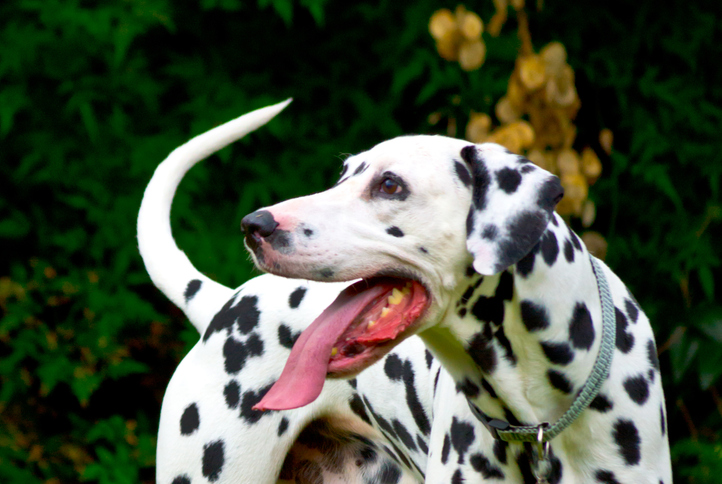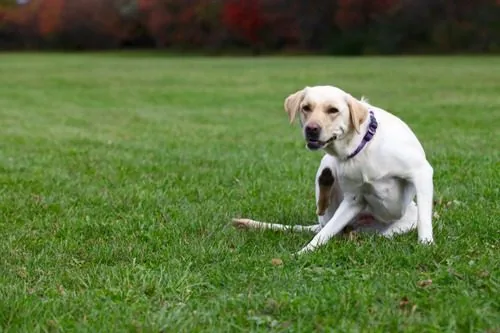Dog Tail Wagging: 6 Interesting Facts About This Behavior
Have you ever wondered why your dog wags her tail so much? Do you find yourself questioning what this dog tail wagging behavior truly means, and whether or not humans interpret it the correct way? If any of this sounds like you, you’re not alone!

What You Should Know About Dog Tail Wagging
In the article below, you’ll find out some answers to common questions pet owners may have about their dogs’ tail wagging behavior. With the help of this information, you can better understand your pet and learn more about what she’s telling you when she wags her tail at you.
Here are 6 facts every pet parent should know about dog tail wagging:
Tail Wagging is Easy for Dogs to Understand
The reason tail wagging is so common in dogs is because it is easy for them to understand. Since they can’t talk to each other, they have developed the ability to show their intentions through their tails, and it gets the job done well.
Dogs pay a lot of attention to movement, but they don’t notice other details like color as much. Because of this, they are more likely to notice a tail that is moving in a certain way than a tail that is a unique color. This focus on tail movement is why tail wagging remains so easy for dogs to understand.
Puppies Learn Tail Wagging Communication at an Early Age
Puppies aren’t born knowing how to communicate with their tails, but they pick it up very quickly. By the time a puppy is old enough to be taken away from her mother and sent to her new home, she will know a lot about tail communication, as she has picked it up from her mother.
Puppies who are kept in their litters for a couple of months practice tail wagging communication with each other, too. This is a safe environment for them to learn, since there aren’t any dogs present who will become aggressive if the wrong tail communication is used.
Dog Tail Position Can Make a Difference
It may not seem as though it’s something of importance, but dog tail position makes a big difference in showing what your dog is feeling, as well as how she’s communicating with other dogs.
Holding Tail Slightly Higher Over Her Back or Straight Out
A dog whose tail is kept slightly higher over her back or in a neutral position is a happy, content dog. She may be excited about meeting someone new, or she may just be having a good time playing with her toys. If she becomes especially excited or curious about something, she may hold her tail straight out instead.
Keeping Her Tail Low
On the other hand, if a dog’s tail is kept low, this means she is afraid or submissive.
Holding Tail Very High and Arched
If her tail is very high and arched over her back, she may be aggressive instead. Position means a lot to other dogs in this way.
Tail Wagging Speed Can Help Indicate Different Meanings, Too
Not only can the position of your dog’s tail give off a certain message, but dog tail wagging speed can contribute to this, as well. You can learn a lot about how your dog is feeling by how slow or fast she’s wagging her tail.
Fast Speed
It’s probably no secret that a dog whose tail is wagging quickly is a very happy, excited dog. If your dog’s tail wags are fast, she is enjoying herself and may be excited about something, like dinnertime or a favorite toy.
However, if your dog is showing other signs of aggression and has her tail very high and arched over her back, fast wagging may be a sign of aggression.
Slow Speed
On the other hand, if the dog’s tail wags are very slow and seem uncertain, she may be nervous or anxious about something.
Even Dog Tail Wagging Direction Can Mean Something Different
There have been some studies that indicate a dog’s tail wagging direction varies depending on the dog’s mood or feelings at the time.
Wagging to the Left
Wagging to the left is a sign of fear or nervousness.
Wagging to the Right
On the other hand, if your dog’s wagging her tail to the right, this is a sign of happiness and excitement.
It can be tricky to pay close enough attention to your dog to tell in which direction she is wagging her tail. However, if you learn to do this, you may be surprise at what you can learn about her mood!
Dogs Without Tails Have More Trouble Communicating
Dogs who don’t have tails are unable to communicate with the same type of body language as those that do. Therefore, they may become more nervous around other dogs because of their limited communication functions.
These dogs rely more on their eyes, eyebrows, and posture to show other dogs their intentions. With practice, they may become more easygoing around other dogs as well.
So, What Does Dog Tail Wagging Mean?
As you can see, dog tail wagging is almost always a positive behavior. Even so, it’s a good idea to understand what your pet means when she does this, and what you need to do in response, if anything. The information in this article should help you get a better idea of your dog’s tail wagging.
If you have any further questions or concerns about your pet’s behaviors or body language, talk to your veterinarian for more information. Your vet can help you understand your individual pet more fully and can help determine if any odd behaviors are concerning or not.
Dog tail wagging is a very common behavior that can hold a variety of different meanings, depending on how your dog is doing it. At The Village Vets, we’ll help answer any and all questions about your pet’s behavior as well as her general health. Schedule an appointment at any one of our locations today to learn more about your pet!
Recent Posts
About The Village Vets
The Village Vets is a network of animal hospitals based in Atlanta, GA and the surrounding area. We offer honest, excellent service to our clients in a comfortable, friendly atmosphere. To learn more about our locations and how we can better serve you and your pet, click the button below.
Share This Post
Recent Posts
About The Village Vets
The Village Vets is a network of animal hospitals based in Atlanta, GA and the surrounding area. We offer honest, excellent service to our clients in a comfortable, friendly atmosphere. To learn more about our locations and how we can better serve you and your pet, click the button below.



